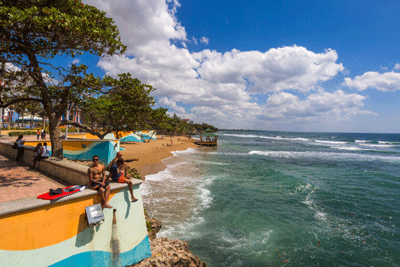What are the problems?
To begin with, there is more flooding to come. In Santo Domingo, for example, the poorest and already affected by flooding. Many live along the edge of the Ozama river and on its floodplain. A higher storm surge or more heavy rains caused by climate change would make them even more vulnerable.
The Dominican Republic is already taking action to face this great challenge, but there is still much to be done, says Jerry Meier, an expert in climate change for the World Bank.
He warns that “there is a lack of knowledge about the floodplains and there aren’t any exclusion zones, so the situation will stay the same.”
Another grave challenge is coastal erosion. Given that the majority of the region’s capital cities, ports and airports are to be found on the coast, this is a serious threat for the development for a region with deep ties to the sea. Tourism and agriculture are the root of many Caribbean economies. Last year, 25 million tourists visit the Caribbean. Coastal erosion caused by rising sea levels is a real threat for the tourist industry. In fact, this is already a reality faced by St George’s, Grenada, Kingstown, Saint Vincent, Castries, Saint Vincent and above all in Cane Field, Dominica, where the airport already floods.
Finally, the Caribbean faces the problem of salt-water infiltration into its freshwater. The region relies heavily on rain water to refresh its freshwater reserves, which are threatened by a rise in global sea levels. As the sea levels rise it increases the risk of salty water infiltrating freshwater sources, which, are already drying up because of over irrigation, hydroelectricity and poor water management. If they don’t act quickly, many countries face the possibility of having to finance the costly process of desalination.
To improve their climate resilience, that is to say the Caribbean’s ability to resist and adapt to the effects of climate change, the World Bank produced a series of recommendations:
Social: Poor and vulnerable people will be the most affected by a global sea level rise. Land planning needs to be incorporated more into social programmes to tackle how exposed they are to risk.
Economic: Any preventative system needs to establish an economic recovery and diversification plan following a disaster.
Environmental: More investment in flood controls which don’t damage the environment is needed as is preparation for changes in rainfall volume and frequency
Risks: Land planning has the potential to contribute to risk management in coastal cities and promote more compact cities, something that could reduce the emission of greenhouse gasses, as well as protecting people who live in high-risk areas.

